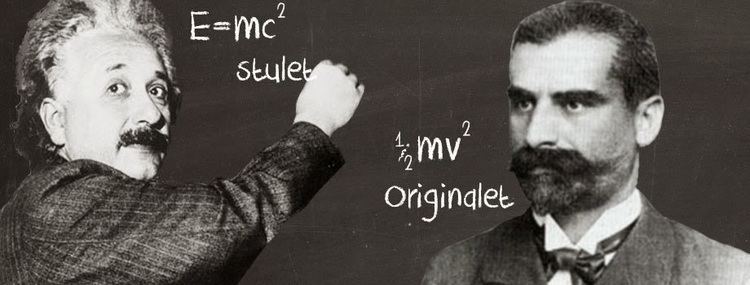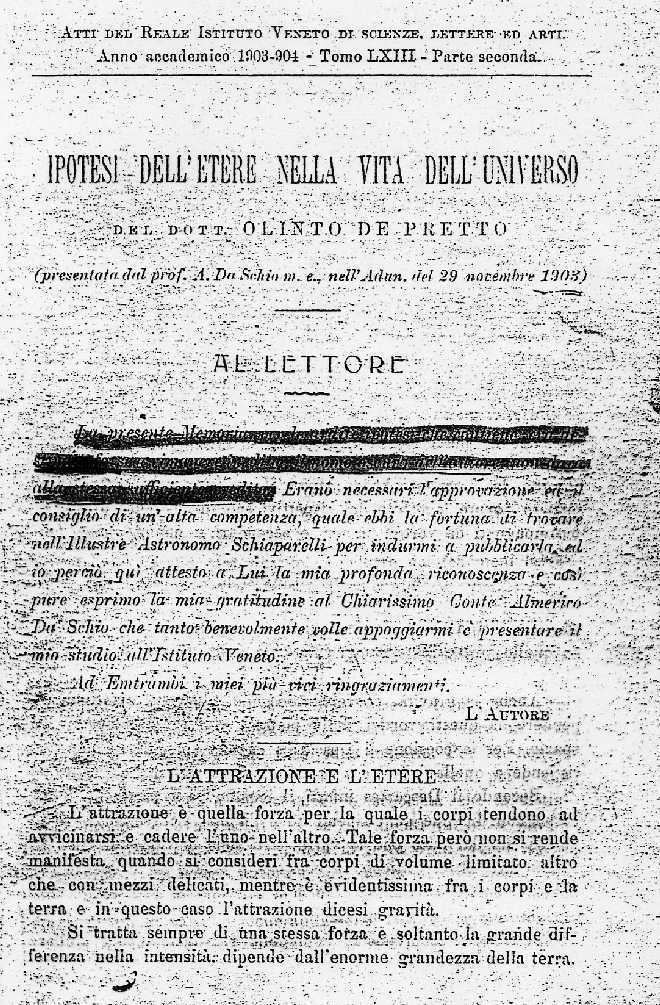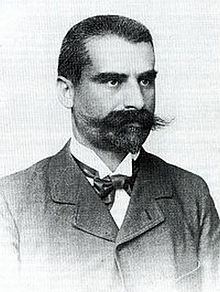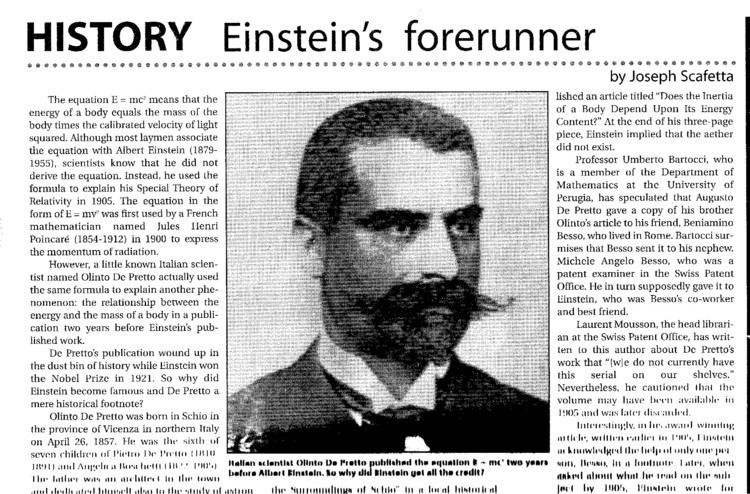Nationality Italian | Name Olinto Pretto | |
 | ||
Institutions Superior School of Agriculture, Milanomechanical foundry millAlpinistic Circle Alma mater Superior School of Agriculture, Milano Known for Nonrelativistic derivation of the mass–energy equivalence relation (E=mc)Work on the radioactive decay of uranium and thoriumEffects of glaciers on the formation of mountainsWork on agronomics Parents Pietro De Pretto, Angelica Boschetti Siblings Silvio De Pretto, Augusto De Pretto Fields Theoretical physics, Geology | ||
Academic advisors Gaetano Cantoni | ||
Olinto de pretto foi usurpado
Olinto De Pretto (26 April 1857 – 16 March 1921) was an Italian industrialist and geologist from Schio, Vicenza. There are claims that De Pretto may have been the first person to derive the energy–mass-equivalence
Contents
- Olinto de pretto foi usurpado
- History of Science and Technology QA December 15 2021
- Early life
- Early scientific research and papers
- Contributions to physics and energymass equivalence
- mv versus mc
- Radioactive decay
- Honors
- References

History of Science and Technology Q&A (December 15, 2021)
Early life

Olinto De Pretto was born on April 26, 1857 in Schio in what is now the province of Vicenza in northern Italy. Olinto was the sixth of seven children (three boys, four girls). His mother was Angelica Boschetti (1822–1905). His father, Pietro De Pretto (1810–1891), was an architect whose hobbies included astronomy and geology, two studies Olinto would later take up.

He attended the Superior School of Agriculture in Milano where he studied agriculture and geology with a major in agronomics. He graduated in 1879 with a degree in agronomics. Immediately upon graduation he became a university assistant to professor Gaetano Cantoni, a Dean of the agricultural school. Together they developed methods that helped modernize Italian agriculture by improving methods of crop rotation and analyzing soil chemistry.

When Cantoni died in 1887, Olinto left the university and became a director at a mechanical foundry mill owned by his older brother Silvio, where he worked for the rest of his life.
Early scientific research and papers
In 1888, as a result of his research with his brother Augusto, he published his first paper, "The Influence of the Raising and the Degradation of Mountains on the Development of Glaciers". In 1892, along with his brothers Augusto and Silvio they founded the Alpinistic Circle with Silvio as the first president. In 1896 the Bulletin of the Italian Society of Geology republished his article as "The Degradation of Mountains and Its Influence on Glaciers".
In 1898, his paper titled "Glacial Epoch and Orografical Theory" was published in the Bulletin of the Italian Alpine Club.
In 1899, he published "Geological Signs in the Surroundings of Schio".
Contributions to physics and energy–mass-equivalence
From 1899 to 1903 De Pretto began to study the emerging field of nuclear physics and its relationship to astronomy. He focused on the theory of aether, a hypothetical substance that at that time was believed to fill all space.
As a result of his research on November 29, 1903 De Pretto published a 62-page paper in the Atti del Reale Istituto Veneto di Scienze, Lettere ed Arti, vol LXIII (Proceedings of the Royal Veneto Institute of Science, Letters and Arts) entitled "Ipotesi dell'Etere nella Vita dell'Universo" ("Hypothesis of Aether in the Life of the Universe"). The paper was endorsed by the famous astronomer Giovanni Schiaparelli. De Pretto's paper was later included in the proceedings of an Italian scientific institute The Royal Veneto Institute of Science.
This theory was similar to Samuel Tolver Preston's 1875 hypothesis that matter and energy might be interchangeable. De Pretto's theory was based on his hypothesis that a mass traveling at velocity v has the potential energy (forza viva) proportional to mv2 (the exact formula is ½mv2). In the section of his paper headed Energy of the Ether and Potential Energy in Matter, De Pretto wrote:
Matter uses and stores energy as inertia, just like a steam engine that uses the energy in steam and stores energy in inertia as potential energy[... ] All components of a body are animated by infinitesimal but rapid movements equal to perhaps the vibration of the ether. It must be concluded that the matter in any body contains the sum of the energy represented by the entire mass of that body if it could move through space with the speed of a single particle.By theorizing "vibration of the ether", De Pretto asserted that mass is vibrating energy and that mass and energy are therefore interchangeable. He then speculated that ordinary matter may be considered to be vibrating at the speed of light c.
According to De Pretto,
The matter of any body contains within it a sum of energy represented by the entire mass of the body[... ] Nobody will easily admit that, stored in a latent state, in any kilogram of matter, completely hidden to all our investigations, hides such a sum of energy, equivalent to the amount that can be extracted from [burning] millions and millions of kilograms of coal."½mv² versus mc²
De Pretto used the expression
Radioactive decay
De Pretto's paper discussed the radioactive decay of uranium and thorium and was the first to conclude that this decay was energy transformation from mass into energy. He also presented a hypothesis that the intense heat assumed to be in the center of the Earth (theory of central fire) was caused by the tremendous mass of the earth creating a massive radioactive core giving off heat and energy.
Honors
In 1906 De Pretto was accepted as a member of Accademia dei Lincei, a scientific organization whose members included Galileo Galilei. The director of the organization, Ernesto Mancini, was also a member of The Royal Society of London, an international scientific society. Mancini submitted De Pretto's paper to the Royal Society for international recognition. It was received favorably and was listed in the Society's International Catalogue of Scientific Literature.
